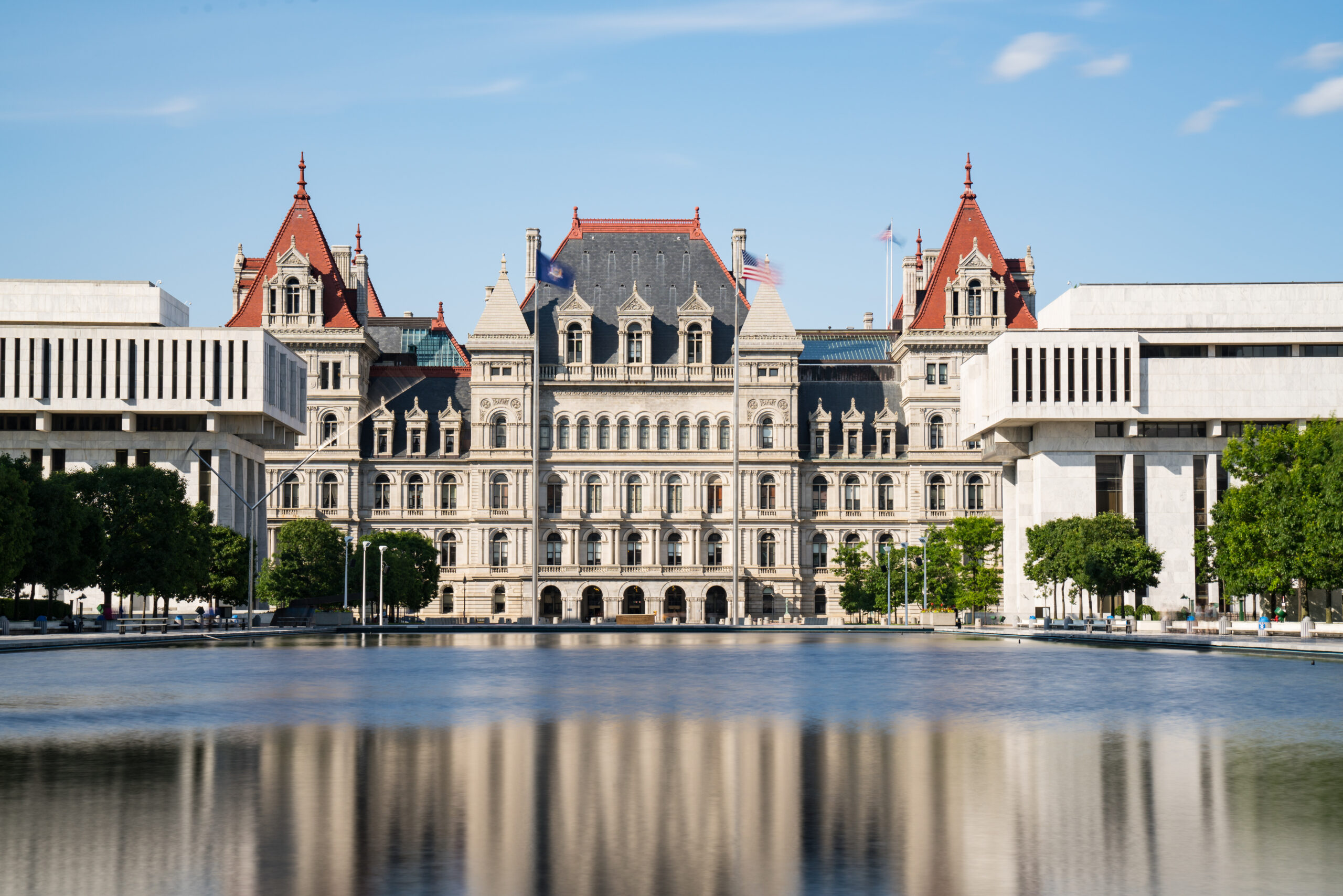
New York State Capitol Building on the Empire State Plaza in Albany. New York
Contact: Annette McDermott
annette@sunstonestrategies.org
CC: Friday Apaliski
friday@buildingdecarb.org
REPORT: New York State Legislature, PSC must intervene to save customers from unbearably high gas bills in the future
Gas utility spending has ballooned by $15 billion in 10 years, costs that could contribute to bills rising to $8k per household per month by 2050 as gas customer base declines
ALBANY, N.Y.— As more and more New Yorkers opt for zero-emissions technologies at home to end their reliance on gas, the monthly cost to maintain the gas system for remaining customers will rise, eventually reaching up to $8,000 per household by 2050. That’s if the New York State Legislature and Public Service Commission (PSC) do not begin to redirect gas utility spending and initiate a managed, phased, equitable transition toward clean energy, according to an independent report by the Building Decarbonization Coalition released today.
“This report is a wakeup call. Gas utilities are spending billions in customer money for a system they may not want or need. The New York State Legislature must put public interest over industry profits by empowering the PSC to begin a manage a phased, equitable transition to clean energy, starting with low-income communities who cannot afford to be left holding the bag for gas system costs,” said Lisa Dix, the New York Director of the Building Decarbonization Coalition.
The BDC report, “The Future of Gas in New York State,” notes that $5 billion in utility spending has been authorized by the PSC since the 2019 passage of the Climate Leadership and Community Protection Act. To achieve the targets set in this groundbreaking law, the New York Climate Action Council has projected the state needs to decarbonize 85% of its buildings by 2050.
The report finds that the rate of gas utility spending has ballooned to over $15 billion in the past 10 years, the vast majority of which has gone toward replacing thousands of miles of New York’s aging, leak-prone pipes. The cost of repairing one gas main can cost up to $30,000 per customer served by the line. Gas utilities traditionally pass these costs on to customers over several decades, but this spending is increasingly out of touch with New York’s climate goals, and customer preferences to move to zero-emission technologies.
New York stands to see a $7 to $11 billion boost through 2050 from the Inflation Reduction Act for weatherization, energy efficiency, and to encourage the adoption of highly efficient electric alternatives such as heat pumps and induction stoves. As an increasing number of New Yorkers choose to utilize subsidies for clean energy and leave the gas system, low and middle income customers will be stuck with astronomical gas bills.
“The increasing competitiveness of electric alternatives with traditional gas appliances in New York State poses a significant risk to the current gas utility business model. This competition is good for complying with the state’s emissions targets, but failure to change how we regulate gas utilities will lead to significant increases in energy bills. To prevent spiraling costs, regulators need to move beyond asking the gas utilities what their plans for climate law compliance are and instead develop and implement a cohesive energy planning framework,” said Mike Bloomberg, report co-author and Managing Partner, Groundwork Data
This report details five urgent recommendations for the State Legislature, PSC, and New York Department of Environmental Conservation (DEC) to achieve the ambitious emissions reductions required by the CLCPA, including ending gas subsidies, setting clear emissions reduction targets, and giving the PSC the tools to take an active role in utility spending and coordinate at the local and regional level to equitably transition entire communities toward zero-emissions technology. As gas utilities prepare to present the PSC with gas system pathway studies, this report offers an alternative for New York leaders that puts public interest over industry profits.
“The current system is simply unsustainable—we must align our spending with our climate goals. (CLCPA),” noted Dix. “Rather than continue to burden New Yorkers with expanding costs paid by fewer customers, state leaders can save residents billions of dollars in wasted infrastructure by kick-starting a managed transition to clean energy.”
Utilities have introduced plans to blend 20% of hydrogen with 80% of “renewable natural gas” (RNG). Not only will these plans fail to eliminate on-site pollution from buildings and burden customers with increasing health and safety risks, they will increase costs for consumers as RNG is at least three times as expensive to produce when compared to natural gas. This will result in the same negative feedback loop pushing consumers to leave the gas system and raising infrastructure costs over a shrinking customer base.
“When gas utilities propose a future of home heating using renewable natural gas or hydrogen, they are not being realistic. If you look closely at such proposals, you will see that they all rely on assumptions that lack sound scientific or economic foundations,” concluded Mike Walsh, Ph.D, report co-author and Founding Partner, Groundwork Data. “It is imperative that regulators acknowledge the limitations of these proposals and support more viable alternatives to achieve net-zero emissions in New York State.”
